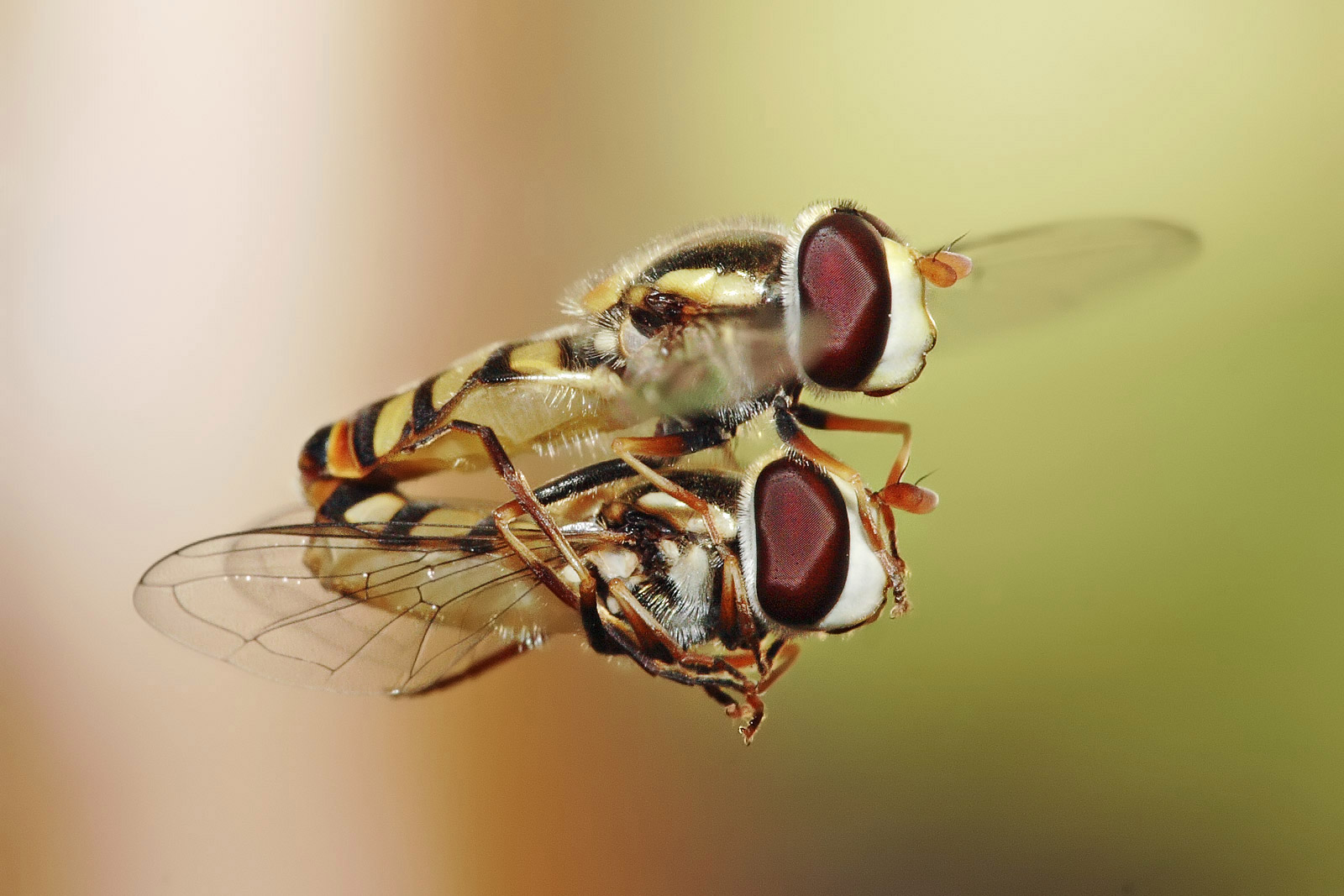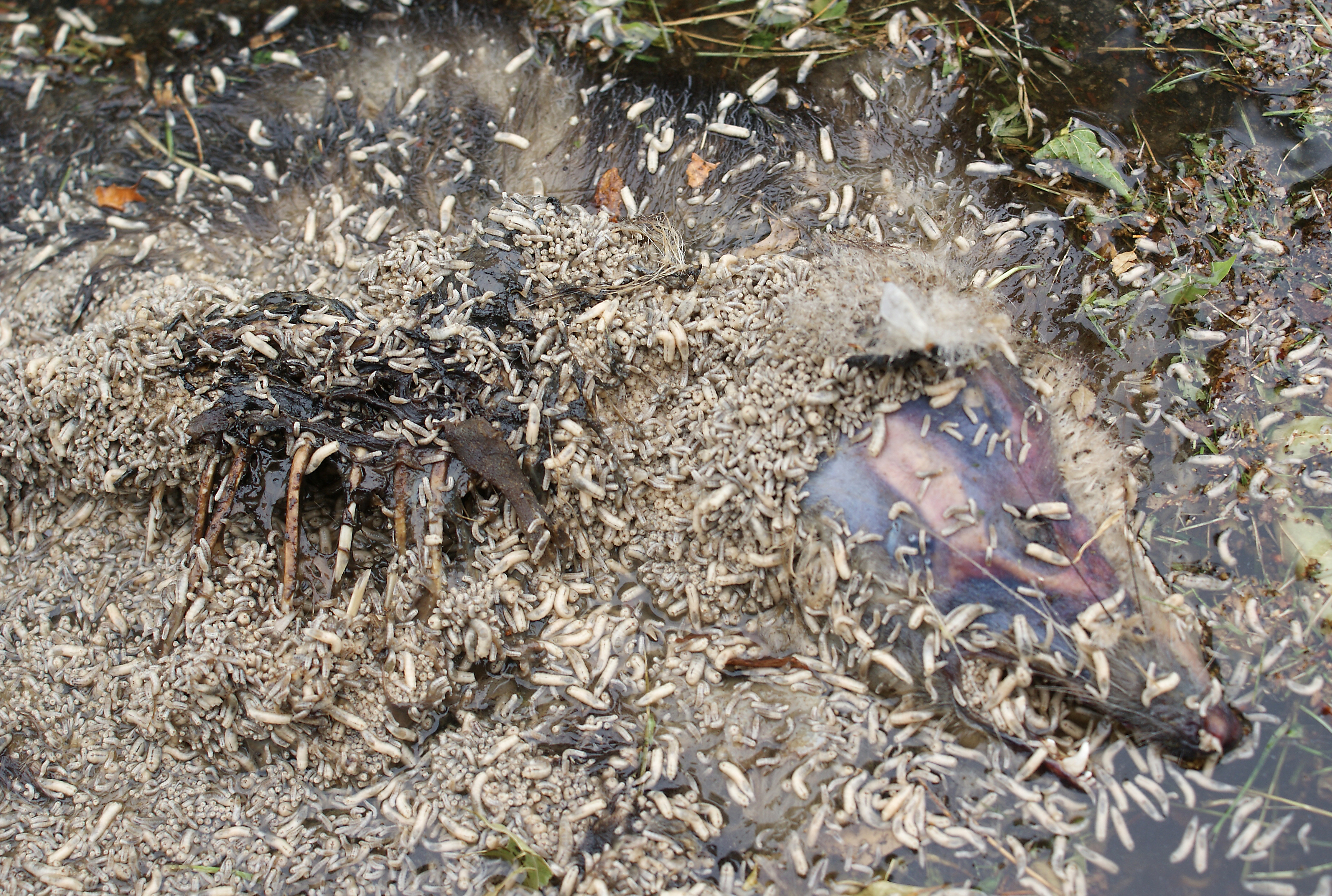|
Helophilus Seelandicus
''Helophilus seelandicus'', commonly known as the three-lined hoverfly, is a hoverfly endemic to New Zealand. The common name corresponds to the three black lines behind the insect's head. Taxonomy This species was first described by Johann Friedrich Gmelin in 1790 and named ''Musca seelandica''. The taxonomy of this species was most recently discussed by F. Christian Thompson in 2008. Description The adult fly is approximately 15 mm in length. Distribution This species is endemic to New Zealand. Life cycle ''H. seelandicus'' maggots live in water with decaying vegetation, animals or dung. Interaction with humans Despite being native to New Zealand, this species is commonly reported to the Ministry for Primary Industries (New Zealand), Ministry of Primary Industries Pest and Disease Hotline. References External links * ''Helophilus seelandicus'' discussed in Radio New Zealand, RNZ ''Critter of the Week''27 January 2023 {{Taxonbar, from=Q5709918 Diptera of ... [...More Info...] [...Related Items...] OR: [Wikipedia] [Google] [Baidu] |
Johann Friedrich Gmelin
Johann Friedrich Gmelin (8 August 1748 – 1 November 1804) was a German natural history, naturalist, botanist, entomologist, herpetologist, and malacologist. Education Johann Friedrich Gmelin was born as the eldest son of Philipp Friedrich Gmelin in 1748 in Tübingen. He studied medicine under his father at University of Tübingen and graduated with a Master's degree in 1768, with a thesis entitled: ', defended under the presidency of Ferdinand Christoph Oetinger, whom he thanks with the words '. Career In 1769, Gmelin became an adjunct professor of medicine at University of Tübingen. In 1773, he became professor of philosophy and adjunct professor of medicine at University of Göttingen. He was promoted to full professor of medicine and professor of chemistry, botany, and mineralogy in 1778. He died in 1804 in Göttingen. Johann Friedrich Gmelin when young became an "apostle" of Carl Linnaeus, probably when Linnaeus was working in the Netherlands, and undertook a plant-c ... [...More Info...] [...Related Items...] OR: [Wikipedia] [Google] [Baidu] |
Hoverfly
Hover flies, also called flower flies or syrphid flies, make up the insect family Syrphidae. As their common name suggests, they are often seen hovering or nectaring at flowers; the adults of many species feed mainly on nectar and pollen, while the larvae (maggots) eat a wide range of foods. In some species, the larvae are saprotrophs, eating decaying plant and animal matter in the soil or in ponds and streams. In other species, the larvae are insectivores and prey on aphids, thrips, and other plant-sucking insects. Insects such as aphids are considered a crop pest, and therefore the aphid-eating larvae of some hover flies serve as an economically (as well as ecologically) important predator and even potential agents for use in biological control, while the adults may be pollinators. About 6,000 species in 200 genera have been described. Hover flies are common throughout the world and can be found on all continents except Antarctica. Hover flies are harmless to most mammals, th ... [...More Info...] [...Related Items...] OR: [Wikipedia] [Google] [Baidu] |
Endemic
Endemism is the state of a species being found in a single defined geographic location, such as an island, state, nation, country or other defined zone; organisms that are indigenous to a place are not endemic to it if they are also found elsewhere. For example, the Cape sugarbird is found exclusively in southwestern South Africa and is therefore said to be ''endemic'' to that particular part of the world. An endemic species can be also be referred to as an ''endemism'' or in scientific literature as an ''endemite''. For example ''Cytisus aeolicus'' is an endemite of the Italian flora. ''Adzharia renschi'' was once believed to be an endemite of the Caucasus, but it was later discovered to be a non-indigenous species from South America belonging to a different genus. The extreme opposite of an endemic species is one with a cosmopolitan distribution, having a global or widespread range. A rare alternative term for a species that is endemic is "precinctive", which applies to ... [...More Info...] [...Related Items...] OR: [Wikipedia] [Google] [Baidu] |
Maggots
A maggot is the larva of a fly (order Diptera); it is applied in particular to the larvae of Brachycera flies, such as houseflies, cheese flies, and blowflies, rather than larvae of the Nematocera, such as mosquitoes and crane flies. Entomology "Maggot" is not a technical term and should not be taken as such; in many standard textbooks of entomology, it does not appear in the index at all. In many non-technical texts, the term is used for insect larvae in general. Other sources have coined their own definitions; for example: "The term applies to a grub when all trace of limbs has disappeared" and "Applied to the footless larvae of Diptera".Smith, John. BExplanation of terms used in entomology Brooklyn Entomological Society, 1906. Additionally, in ''Flies: The Natural History and Diversity of Diptera'', the author claims maggots "are larvae of higher Brachycera (Cyclorrhapha)." Maggot-like fly larvae are of significance in ecology and medicine; among other roles, various speci ... [...More Info...] [...Related Items...] OR: [Wikipedia] [Google] [Baidu] |
Ministry For Primary Industries (New Zealand)
, logo = MPINZ-logo.svg , logo_width = , logo_caption = , picture = , picture_width = , picture_caption = , formed = , preceding1 = Ministry of Agriculture and Forestry , preceding2 = Ministry of Fisheries , preceding3 = New Zealand Food Safety Authority , dissolved = , superseding = , jurisdiction = New Zealand , headquarters = , region_code = , coordinates = , motto = , employees = , budget = Total budgets for 2019/20''Vote Agriculture, Biosecurity, Fisheries and Food Safety''$848,779,000''Vote Forestry''$277,099,000 , minister1_name = Damien O'Connor , minister1_pfo = Agriculture, Biosecurity, and Rural Communities , minister2_name = Stuart Nash , minister2_pfo = Forestry , minister3_name = David Parker , minister3_pfo = Oceans and Fisheries , minister4_name = Meka Whaitiri , minister4_pfo = Foo ... [...More Info...] [...Related Items...] OR: [Wikipedia] [Google] [Baidu] |
Radio New Zealand
Radio New Zealand ( mi, Te Reo Irirangi o Aotearoa), commonly known as Radio NZ or simply RNZ, is a New Zealand public-service radio broadcaster and Crown entity that was established under the Radio New Zealand Act 1995. It operates news and current-affairs network, RNZ National, and a classical-music and jazz network, RNZ Concert, with full government funding from NZ on Air. Since 2014, the organisation's focus has been to transform RNZ from a radio broadcaster to a multimedia outlet, increasing its production of digital content in audio, video, and written forms. The organisation plays a central role in New Zealand public broadcasting. The New Zealand Parliament fully funds its AM network, used in part for the broadcast of parliamentary proceedings. RNZ has a statutory role under the Civil Defence Emergency Management Act 2002 to act as a "lifeline utility" in emergency situations. It is also responsible for an international service (known as RNZ Pacific); this is broa ... [...More Info...] [...Related Items...] OR: [Wikipedia] [Google] [Baidu] |
Critter Of The Week
''Critter of the Week'' is a weekly RNZ National programme about endangered and neglected native plants and animals of New Zealand. Beginning in 2015, ''Critter of the Week'' is an approximately 15-minute discussion between Nicola Toki of the Department of Conservation and host Jesse Mulligan on an "uncharismatic and lovable" New Zealand species. The topic of spotlighting uncharismatic species was raised in an interview by Mulligan in April 2015, and the programme originated in a discussion between Mulligan and Toki about threatened bird conservation, in which she lamented a lack of attention and corporate funding for species such as the ''Smeagol'' gravel maggot. The first episode, airing 2 October 2015, featured the New Zealand bat fly. Each week's broadcast is supported by improving the Wikipedia article for the species in question. The show currently airs on Friday afternoons. In 2018, artist Giselle Clarkson designed t-shirts featuring a selection of species that had app ... [...More Info...] [...Related Items...] OR: [Wikipedia] [Google] [Baidu] |
Diptera Of New Zealand
Flies are insects of the order Diptera, the name being derived from the Greek δι- ''di-'' "two", and πτερόν ''pteron'' "wing". Insects of this order use only a single pair of wings to fly, the hindwings having evolved into advanced mechanosensory organs known as halteres, which act as high-speed sensors of rotational movement and allow dipterans to perform advanced aerobatics. Diptera is a large order containing an estimated 1,000,000 species including horse-flies, crane flies, hoverflies and others, although only about 125,000 species have been described. Flies have a mobile head, with a pair of large compound eyes, and mouthparts designed for piercing and sucking (mosquitoes, black flies and robber flies), or for lapping and sucking in the other groups. Their wing arrangement gives them great maneuverability in flight, and claws and pads on their feet enable them to cling to smooth surfaces. Flies undergo complete metamorphosis; the eggs are often laid on the larv ... [...More Info...] [...Related Items...] OR: [Wikipedia] [Google] [Baidu] |
Eristalini
Eristalini is a tribe of hoverflies. Several species are well-known honeybee mimics, such as the drone fly ''Eristalis tenax'', while other genera such as '' Helophilus'' and '' Parhelophilus'' exhibit wasp-like patterns of yellow and black stripes, both strategies to avoid predation by visual predators such as birds. They breed in decaying organic materials such as run-offs from dung heaps ('' Eristalis'') or in ponds and ditches (e.g. '' Anasimyia''). Some others, such as ''Myathropa'' and '' Mallota'', breed in wet rotting tree stumps and rot holes. A characteristic feature of this tribe is the " rat-tailed maggot" with a rear positioned telescopic breathing tube, allowing the larvae to breathe while living submerged in water or mud. This feature is also shared with another hoverfly tribe the Sericomyiini though those flies do not share the characteristic eristaline dip in wing vein R4+5. List of genera Thompson considers the tribe Sericomyiini a subtribe of the Eristalin ... [...More Info...] [...Related Items...] OR: [Wikipedia] [Google] [Baidu] |
Insects Described In 1790
Insects (from Latin ') are pancrustacean hexapod invertebrates of the class Insecta. They are the largest group within the arthropod phylum. Insects have a chitinous exoskeleton, a three-part body (head, thorax and abdomen), three pairs of jointed legs, compound eyes and one pair of antennae. Their blood is not totally contained in vessels; some circulates in an open cavity known as the haemocoel. Insects are the most diverse group of animals; they include more than a million described species and represent more than half of all known living organisms. The total number of extant species is estimated at between six and ten million; In: potentially over 90% of the animal life forms on Earth are insects. Insects may be found in nearly all environments, although only a small number of species reside in the oceans, which are dominated by another arthropod group, crustaceans, which recent research has indicated insects are nested within. Nearly all insects hatch from ... [...More Info...] [...Related Items...] OR: [Wikipedia] [Google] [Baidu] |

.jpg)

_(cropped).jpg)
_(10144905255).jpg)
